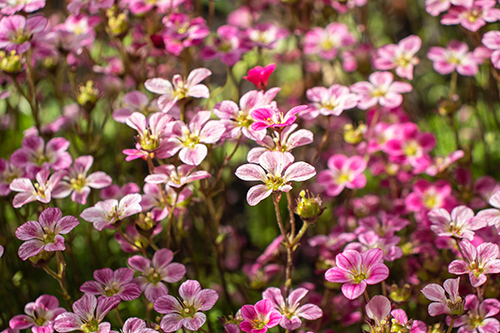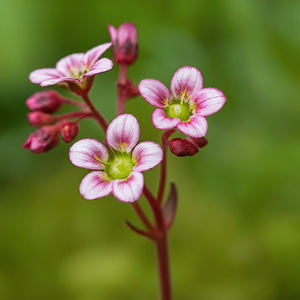Contents
When the saxifrage plant is uprooted at the base of its stem, we can see some small bulbs, which give it the Latin denomination granulate. Since these bulbs resemble some urinary calculi, from ancient times onwards, it was supposed that saxifrage could be recommended to heal the “stone disease” or urinary lithiasis. “It breaks up stones,” said Andrés de Laguna in the 16th century when commenting on the works of Dioscorides.
Today, the saxifrage plant is still used with the same aims, and it is highly appreciated in rural environments of southern Europe.

Saxifrage Plant Scientific Facts
- Scientific Name: Saxifraga granulate L.
- French: Saxifrage.
- Spanish: Saxífraga.
- Environment: It grows in mountainous wetlands throughout Europe and is especially common in the Pyrenees and the Alps.
- Description: A herbaceous plant of the Saxifragaceae family, it can grow up to 50 cm high and has toothed, long-petioled leaves and white flowers in terminal clusters.
- Parts of the plant used medicinally: The root, the flowers, and the leaves.
Saxifrage Healing Properties


The entire plant, especially its root, contains tannin, resin, glycosides, and vitamin C. It has remarkable diuretic properties, and perhaps, since it can alkalinize urine, it promotes the expulsion and dissolution of urine calculi. Its use is recommended to encourage urine elimination, especially in the case of urinary lithiasis (kidney stones), sand in urine, and renal colic.
Saxifrage is one of the most effective herbs known to dissolve urinary stones.
How to use Saxifrage
- Infusion or decoction with 40 to 60 grams of plant per liter of water. Drink two or three cups daily.
DISCLAIMER: All content on this website is presented solely for educational and informational objectives. Do not rely on the information provided as a replacement for advice, diagnosis, or treatment from a qualified medical expert. If you are pregnant, nursing, or have any preexisting medical concerns, talk to your doctor before using any herbal or natural medicines.
REFERENCES
- George D. Pamplona-Roger, M.D. “Encyclopedia of Medicinal Plants.” George D. Pamplona-Roger, M.D. Encyclopedia of Medicinal Plants. Ed. Francesc X. Gelabert. vols. 2 San Fernando de Henares: Editorial Safeliz, 2000. 591. Print.
- Journal of Pharmacy and Pharmacology: https://pubmed.ncbi.nlm.nih.gov/33819504/
- Urinary Tract Health: https://pubmed.ncbi.nlm.nih.gov/38292076/
- Liver Health: https://pubmed.ncbi.nlm.nih.gov/33804908/
- World Journal of Urology: https://www.ncbi.nlm.nih.gov/pmc/articles/PMC3153716/
